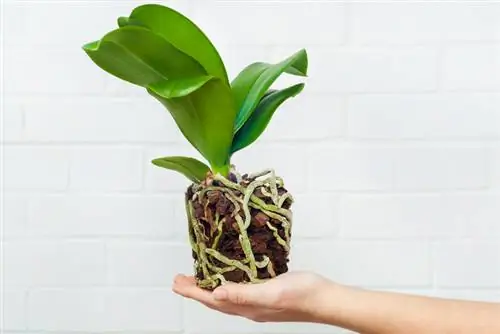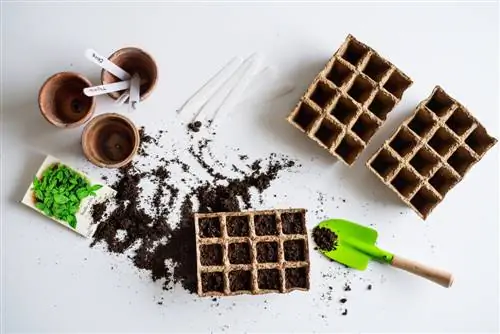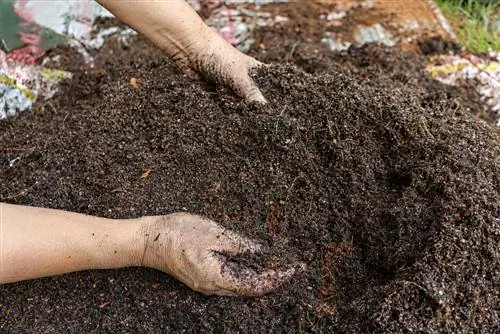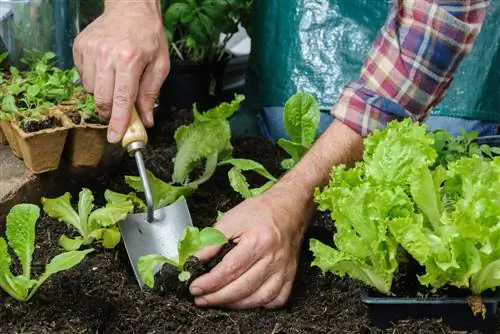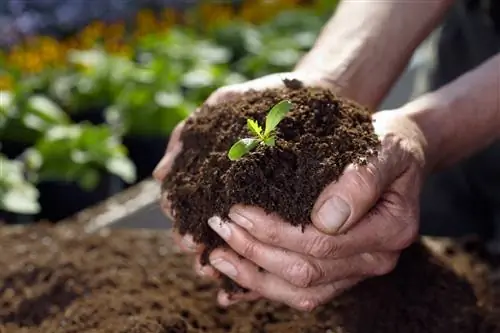- Author admin [email protected].
- Public 2024-01-05 20:48.
- Last modified 2025-01-23 11:22.
Every spring the question arises again: can I use the old potting soil again? This could save costs, because new potting soil is not cheap, depending on the quality.

Can you reuse potting soil?
Before you use potting soil again, it must be prepared. It contains too few nutrients or oxygen. It depends on what plants you are growing. Adjust the fertilizer addition individually. If the flower is severely depleted, it ends up in the compost.
Ingredients of potting soil
Fresh potting soil consists, among other things, of fresh compost, peat or other fibers, as well as a depot of long-term fertilizer. The soil is loose and crumbly and has good structural stability. This is important so that the cultivated plants can find a footing and do not fall over at the slightest gust of wind. To store water, in addition to the fibers, clay granules or perlite (granules made of volcanic glass) are also included. Adding sand makes the soil permeable so that no waterlogging can occur.
The used potting soil
If plants have already been cultivated in the soil for a season, the soil will have collapsed and become firm. It lacks nutrients and the fertilizer depot has been used up. If the soil is used in this condition for another planting, there will no longer be enough oxygen to reach the roots and they can no longer supply the plant with nutrition.
Therefore, used potting soil must always be processed. It is best to use the following options:
- Aerate and loosen the soil well by mechanical processing with a digging fork (€31.00 on Amazon) or hoe
- Incorporate compost or good garden soil
- Bark humus and wool fertilizer also ensure ventilation
- in the garden bed or planter, the soil can be loosened with green manure (phacelia, mustard seed, lupine), which is dug in in spring
- incorporate new long-term fertilizer in the form of horn shavings, sheep's wool or horse manure pellets, it maintains soil life
- always add one or two handfuls of compost to pure nitrogen fertilizer such as horn meal
Depending on which plants are to be cultivated in the prepared soil, the fertilizer addition must be adjusted individually:
- Low feeders such as radishes and peas require little or no new fertilizer
- For medium feeders such as carrots and spinach, add about a handful of fertilizer to 20 liters of soil
- Heavy feeders such as potatoes and tomatoes require two handfuls of fertilizer in 20 liters of soil
If the potting soil is too leached, completely stuck together and heavy with unused water, it does not need to be thrown in the trash. It goes into the compost heap and is renewed there by the soil organisms.


